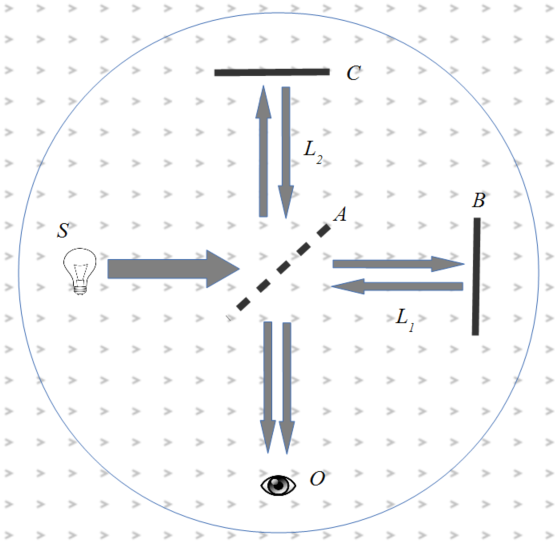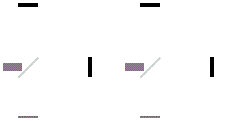(related to Part: Special Relativity)
At the end of the 19th century, the classical physics was able to explain almost every observed phenomenon and as such was believed as the final “theory of everything”, in which there was no room for any new scientific developments. Because of that, even new students were advised not to study physics. In this circumstances, scientists strongly believed that the light, as an electromagnetic wave, needed a medium to spread in the universe. This medium, it was widely believed, was a substance called the "ether". The ether was supposed to be the only thing in the universe, which rested without any movement. All other things and even the light were moving in this substance. In particular, it should be possible to measure the "absolute" speed of all moved bodies related to the resting "ether". It was also believed that it is merely a matter of time, until the existence of the "ether" would be proven by experiment.
The American physicist, Albert Abraham Michelson, came up with the following idea to show the existence of the ether: As the Earth is orbiting about the Sun at a distance of about \(150\) Million kilometers, it is moving with the speed of almost \(30\frac{ \operatorname{km}}{\operatorname{s}}\) (about \(66 611\) miles per hour) around the Sun. Thus, it must be passing the ether at a significant speed and thus, the effect of moving in the ether with this speed must be measurable.
The idea to show the existence of the ether was to show its effect on the speed of light. Michelson's experimental setup used a so-called interferometer: A light source \(S\) shines diagonally on a semi-transparent mirror \(A\). One part of the light \(L_1\) passes straight through the semi-transparent mirror, another part \(L_2\) is reflected at the right angle. Both parts of the light are reflected on their way by the mirrors \(B\) and \(C\) and come back at the semi-transparent mirror \(A\). At this point, both light rays are being split again, but some parts of \(L_1\) and \(L_2\) pass through the semi-transparent mirror \(A\) and reach the observer \(O\).

Picture by BookOfProofs: Own work
Michelson expected that if the interferometer was moved in the ether, the light rays \(L_1\) and \(L_2\) would have different speeds, depending on whether or not the light had to travel "against the current" or "with the current" of the ether, caused by the movement of the Earth orbiting the Sun. The difference in the speeds would be measurable by the observer \(O\), while observing an interference effect (that's why the apparatus was called interferometer).
Further, Michelson expected, that this effect would be most significant and most easily to be measured, if the interferometer was positioned in a way that it was moved in the ether along the straight line connecting the source of light \(S\), the semi-transparent mirror \(A\) and the mirror \(B\). In this case, the speed of the light ray \(L_1\) would be mostly delayed by the current of the ether with respect to the light ray \(L_2\), which would not have to propagate against this current, because it would move perpendicular to the movement of the Earth in the ether.

Picture by Stigmatella aurantiaca (@ Wikipedia).
The picture shows symbolically, what Michelson expected to happen to the light if the interferometer was positioned along the movement of the Earth in the stationary ether.
Michelson performed this experiment in 1881 in Potsdam, Germany. But he failed to observe an interference effect and thus prove the effect of the Earth's movement in the stationary ether on the speed of light. A couple of years later, in 1887, he repeated this experiment with Edward Williams Morley in Cleveland (Ohio, USA), using a more precise interferometer, but again, no ether could be proven. The speed of light seemed to be constant in all directions. The scientific world had to move away from the idea of the ether.